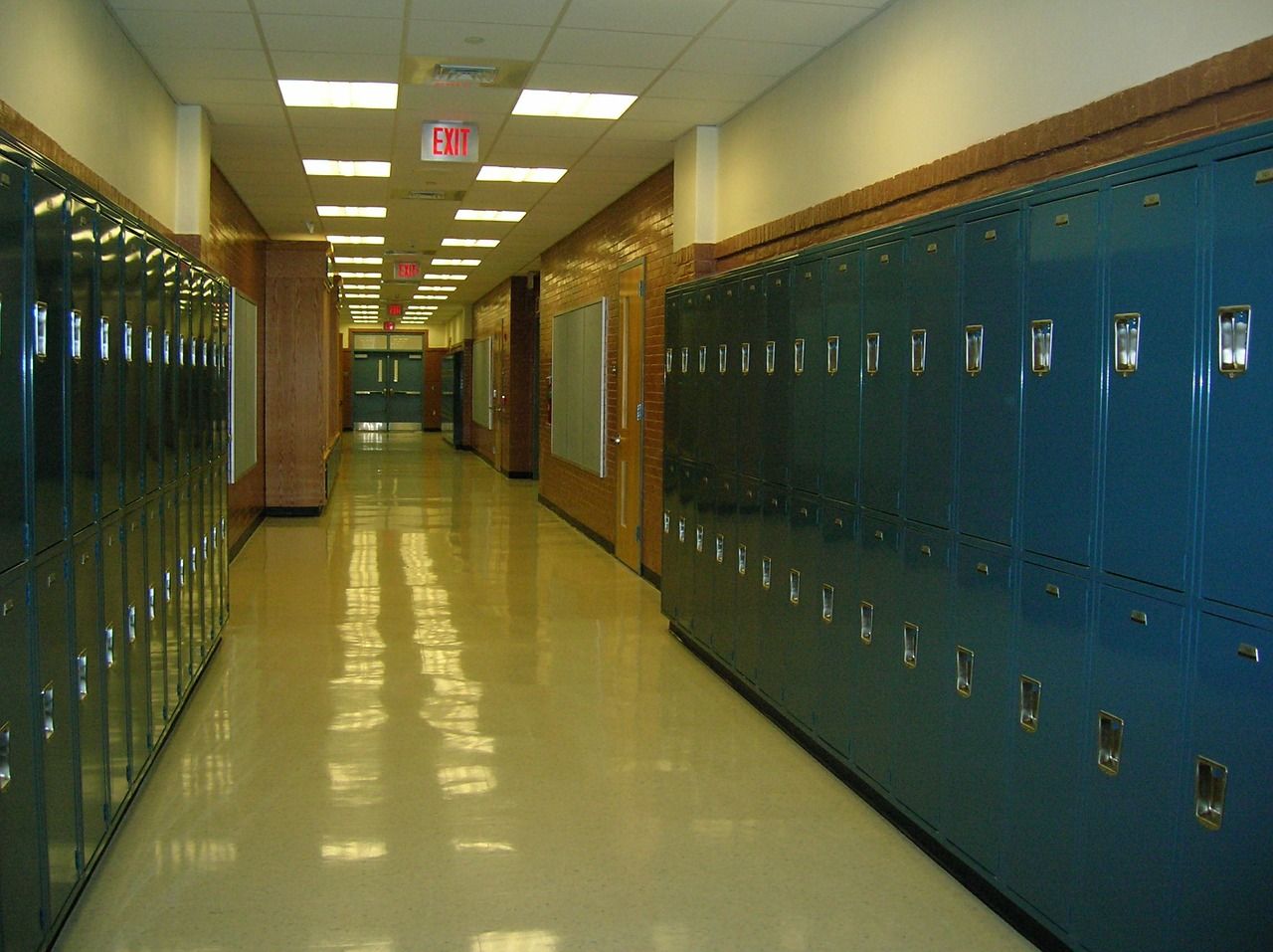Nearly a quarter of the school districts in South Dakota have opted for a four-day school week over the past decade, joining an increasing trend toward the altered schedule nationwide.
According to the South Dakota Department of Education, 34 school districts, or nearly 23 percent of the 149 statewide are maintaining a four-day school week in the current academic year. That’s a jump from 9.23 percent in 2008-09.
Only five other states have more than 20% of their districts on the four-day calendar, according to a study published in the National Council of State Legislatures magazine. Nationally, more than 560 districts in 25 states have gone to the calendar, according to the NCSL.
Most of the districts are small and rural hoping to save money on transportation and other operating expenses, but some urban schools are also making the change.
“In most instances, it’s purely a matter of geography,” said Wade Pogany, executive director of the Associated School Boards of South Dakota. “The more West River you go and the more rural you get, the geography lends itself to more costs transporting students. In some instances, kids on are on buses an hour each way and budgets are still really, really tight. If you are not driving buses on Fridays, you are saving on staff and gasoline.”
Many South Dakota district administrators say the amount of actual savings from the calendar change hasn’t been as much as anticipated, but added benefits of increased time for students to work with teachers, time for teacher training and preparation and other benefits have made the choice a good one.

Saving transportation costs
On average, schools practicing the four-day week hold classes 45-60 minutes longer each day than South Dakota schools on the traditional five-day schedule, administrators say, allowing them to stay well above the mandatory minimum hours of instruction required by the state.
Pogany said the number of districts employing the four-day week is not likely to significantly increase in coming years. But those districts that have opted for the shortened week have realized some added benefits, he said.
“We probably won’t see a marked increase in the near-future,” Pogany said. “The use of that structure has probably plateaued at this point. But we’ve witnessed districts on a four-day week using Fridays for remedial days, allowing students with needs to catch up, as well as (time for) teacher training and in-service for staff.”
Pogany also said rural districts also have witnessed benefits from the four-day week tied to athletics, where some teams travel long distances, often on Fridays, for match-ups against other teams.
“If you’re in Faith and have to travel to Edgemont for a game, that’s a long bus trip,” he said. “It could mean a half a day away from the classroom. By not having Friday classes, those districts are able to retain classroom time.”
Opponents say the longer days can be hard for younger students. And for low-income families, finding quality Friday day care and providing sufficient meals on the days the students aren’t in school also can be challenging.
"It’s not the money savings that some districts thought it would be. But for some schools, particularly rural schools, it works quite well,” Mark Naugle, Custer Superintendent
Custer first to adopt new schedule
Custer was the first school district in South Dakota to transition to a four-day week in 1995, primarily because the southern Black Hills community believed it would realize significant cost savings. But, that’s not really been the case, according to Mark Naugle, superintendent.
“Does it save money? No, it doesn’t,” said Naugle. “For us, the last number I ever heard was it was minimal, less than $100,000 of savings per year. It’s more of a quality of life issue, and what works best for your district. What we found in Custer is something that works for us and that’s why we continue to do it.”
Naugle, a Custer native who oversees a district with 75 teachers and 950 students, said the four-day week is all his teachers and students have ever known. And, by and large, they like the flexibility of the shortened week, which allows parents to schedule things like doctors’ appointments on Fridays without having to excuse their children from class.
“It’s not the money savings that some districts thought it would be,” he said. “But for some schools, particularly rural schools, it works quite well.”
Jennifer Boomsma-Kelsey is principal at Wolsey-Wessington High School, where the four-day school calendar has been in effect for years.
When the district considered switching from a five-day to a four-day week, Boomsma-Kelsey said several community meetings were conducted where advocates provided economic arguments for the shortened school week. But others presented research that showed benefits from eliminating the need for early dismissal on in-service days, providing extra time on Fridays for students in need of help to meet with teachers, and even allowing teachers time to talk to each other about common concerns.
“I think our Fridays are utilized really well for students who need extra time with teachers, particularly in 7th through 12th grades,” she said. “Staff is there from 8 a.m. to noon three of the four Fridays every month, allowing students time to come get individualized help with their teacher, or if they have been sick and have missed school, they can meet with teachers and catch up.”
Boomsma-Kelsey said staff and students in her district have embraced the four-day school week.
“We’ve asked the last five years if they would like to go back to a five-day schedule and it’s always been a resounding `no,’” she said. “They really have become accustomed to it. It’s also been easier for families to plan medical appointments or things they need to do out of town and not worry about their kids missing instructional time.”
The only downside Boomsma-Kelsey could identify with the four-day school week might be tied to younger students who find it more difficult to retain their lessons over three-day weekends. And, in this winter when much of South Dakota has been plagued by blizzards, necessitating cancellation of school, making up those days on Fridays can be stressful for some students.
“When we have to add a Friday due to snow days, it’s a little tougher for these young students,” she said. “They get pretty tired because it’s a long week.”
Iroquois School District Superintendent Mike Ruth has been an educator for 32 years, teaching at Hoven and Midland before moving to his post at Iroquois five years ago and encountering the first four-day school week of his career. Ruth said reaction to the shortened week has been decidedly mixed in his district.
“I see both pros and cons with it,” he said. “Negatives may come from lower-grade teachers who worry about younger children retaining information over three-day weekends, and having suitable time to address all the curriculum needs. The curriculum might be crammed when it shouldn’t be, and they’re concerned that student contact time from not having a fifth day limits time to meet with kids and interact with those they want to.
“But, the Friday flexibility is the number one positive in my mind,” Ruth added. “For older kids who want a job, it allows that opportunity. But my number one thing, and the reason I’m not pounding a drum against the short week, is the Friday flexibility. It allows staff time to meet with each other as well, and not worry about having to get a substitute; a collaborative time, so that’s all a plus.”
In addition to one Friday a month being devoted to students who may need to make up a test, work on reading skills or meet with a teacher about a project, Ruth said other Fridays allow his 27 teachers to complete professional development, CPR training or examine school performance data.
Ruth said the cost-savings tied to a four-day week for his small school district have been “minimal,” with most associated with transportation of students.
While his staff remains evenly split on the four-day week, the district’s 220 students and their parents have expressed their fondness for the schedule, Ruth said.
“Three years ago, there was some discussion about returning to a five-day week, so we did a survey of parents, students and staff to allow them to voice their thoughts,” the veteran educator said. “The staff response was mixed, but the students and parents overwhelmingly approved of it with more than three-quarters wanting to stay on the four-day schedule. After that, we just determined that we should stay with it.”

Parents see pros and cons
Heidi Stroud is a 38-year-old title paraprofessional with the Iroquois School District and the busy mother of a high school junior, eighth grader and fifth-grader. She coaches junior varsity volleyball and tries to keep her kids’ sports schedules straight. Her husband, Keith, works for a steel company in Huron and currently serves as mayor of Iroquois.
Stroud, who grew up with a five-day school week, said her family prefers the four-day schedule, allowing them to schedule doctor’s appointments and take long three-day weekends to camp without her children having to miss classes.
“It’s really great,” she said. “My children love it. If we have a week where we have to go five days, they are crabby. And, lately we’ve been making up snow days on Fridays.”
But more importantly, Stroud said those extended weekends have allowed her family time to bond and enjoy each other’s company in ways she never imagined.
“I think people these days aren’t as family oriented as they once were, and those extra Fridays off give us an opportunity to camp with the kids — just extra time to spend together,” she said. “With my oldest being a junior, it won’t be long before he’s out of the house, so that extra time is very precious to me.”
Breanna Schaefer and her husband, John, of Belle Fourche, have three children, Gabe, 9, who is in third grade, Adam, 6, a kindergartener, and Sawyer, 2. Five years ago the Shaefers moved to Belle Fourche from Miles City, Mont., and a year ago, Breanna became the city’s finance officer. John works as an assistant manager at a Spearfish hardware store.
As the working parents of young children, Breanna said Belle Fourche’s four-day school week has presented them with some challenges they didn’t initially envision.
“I know there are two schools of thought on this,” she said. “But, as a parent who works five days a week 8 to 5, we have to figure out what to do with three kids. It does cause an issue, particularly finding someone willing to care for a child Gabe’s age. And, of course, there’s also the cost. Many day cares don’t want to take a kid for one day a week, because they are full.”
Oddly, as her children have grown, Breanna said the challenge of finding day care for a 9-year-old had only grown greater.
“You’re left with in a quandary of what to do on Fridays,” she said. “He can’t be home alone, he’s really too old for day care and we don’t have family in the area who can help. He doesn’t like it, but he does go to day care.”
Regardless of the trials of being a working parent in a school system with a four-day week, Breanna said her children truly love the schedule and she sees benefits from the system.
“My kids really like it,” she said. “When they have a three-day weekend, they seem to be a little more re-charged when Monday rolls around. And, honestly, I truly believe Belle Fourche has one of the most top-notch education systems in the state of South Dakota. Even with four days, I believe my children are receiving an excellent education.”



